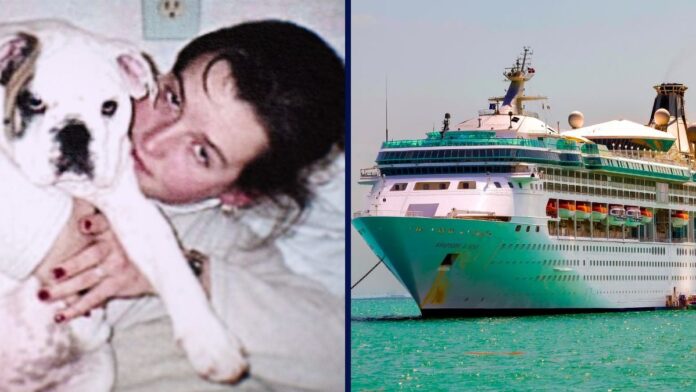Key Aspects:
- The Netflix docuseries “Amy Bradley is Missing” is the second most watched show on the platform globally.
- After watching the now-viral series, viewers have been rallying for justice for Amy and debating how safe cruises really are.
- Ultimately, the likelihood of going missing during a cruise is extremely low and not something most passengers will ever need to worry about.
I don’t know about you, but the mysterious disappearance of former Royal Caribbean guest Amy Bradley is a case that keeps me up at night as both a cruise lover and a true crime fan.
If you don’t know the story, Amy Bradley mysteriously went missing from Royal Caribbean’s Rhapsody of the Seas on March 24, 1998.
While some leads have occasionally popped up over the years, nobody truly knows what happened and the mystery is still unsolved today.
Thanks to the new Netflix docuseries “Amy Bradley is Missing,” her case is back in the spotlight and sparking fears of meeting a similar fate from modern cruisers.
According to the office of Lipcon, Margulies, and Winkleman, P.A., who are nationally recognized maritime lawyers in the US, the documentary is the second-most watched Netflix show globally, with 12.2 million views in the past week alone.
Not only has this led to a renewed public outcry to find out what happened to Amy and to seek justice on her behalf, but it’s brought up concerns about cruise ship safety.
Since the series premiered, Google searches relating to how often people go missing or disappear from cruise ships have skyrocketed by anywhere from 900% to 3,100% depending on the specific prompt.
Even searches for ‘is Curacao safe,’ which is a popular cruise port in the Caribbean and where Amy was last allegedly seen, has jumped up by 300%.
Meanwhile, social media platforms like TikTok have been flooded with thousands of videos from creators discussing theories, claiming that they will never cruise again, and bashing how Royal Caribbean responded to the crisis.
Most notably, viewers felt that the crew members didn’t make a ship-wide announcement about Amy’s disappearance until it was too late.
In 1999, the Bradley family actually filed a lawsuit against Royal Caribbean, but the case was ultimately dismissed.
The cruise line has always held firm in that it acted appropriately and responsibly at all times.
Going Missing is Unlikely
If you haven’t watched it yet, and you like cruising and true crime like me, I highly recommend “Amy Bradley is Missing.”
The docuseries offers a comprehensive look at the case with direct input from the family, investigators, and Royal Caribbean representatives.
The daughter of Alister “Yellow” Douglas, who is a musician who performed onboard and was seen with Amy shortly before her disappearance, was even interviewed.
It also chronicles how Amy’s family has never given up their quest to find their daughter, who today would be 51 years old.
For example, the family had aged images created to try to generate new leads in 2024, which coincided with Amy’s 50th birthday.
However, it’s important to not let the documentary scare you too much. While Amy’s disappearance is absolutely horrible, going missing on cruise ships is actually quite rare.
While it does happen from time to time, the likelihood is very low considering a record 37.7 people are expected to cruise in 2025 and the vast majority will return home from their vacations.
Read Also: How to Stay Safe and Enjoy Your Cruise Vacation
“Cruise ship travel is generally considered very safe,” Michael Winkleman, a leading Personal Injury & Maritime Attorney, stated.
“While high-profile cases from the past, such as the disappearance of Amy Bradley, have gone viral on social media, thanks to the popularity of Netflix’s recent documentary, Amy Bradley Is Missing, the reality is that out of 30 million people who sail on cruises every year, only about 15-20 missing person reports are filed annually,” Winkleman continued.
Over the past 20 years, an estimated 200 to 400 passengers and crew members have gone missing from cruise ships, which is still a relatively low number.
“While these incidents are extremely rare compared to the massive number of travelers, each one is extremely alarming and emotionally devastating for the families and loved ones involved,” Winkleman concluded.
While cruise ships also have their own security teams and more surveillance technology today than they did during Amy’s ill-fated voyage, cruisers can help keep themselves and others safe.
This means practicing caution while on decks or on private balconies, especially when near railings, avoiding excessive alcohol consumption, and staying mindful of their surroundings.
When I cruise, I personally always practice the buddy system with my loved ones so we are never alone.
If one of us does have to do something solo, we tell our travel companions exactly where we’re going and when we expect to come back.

